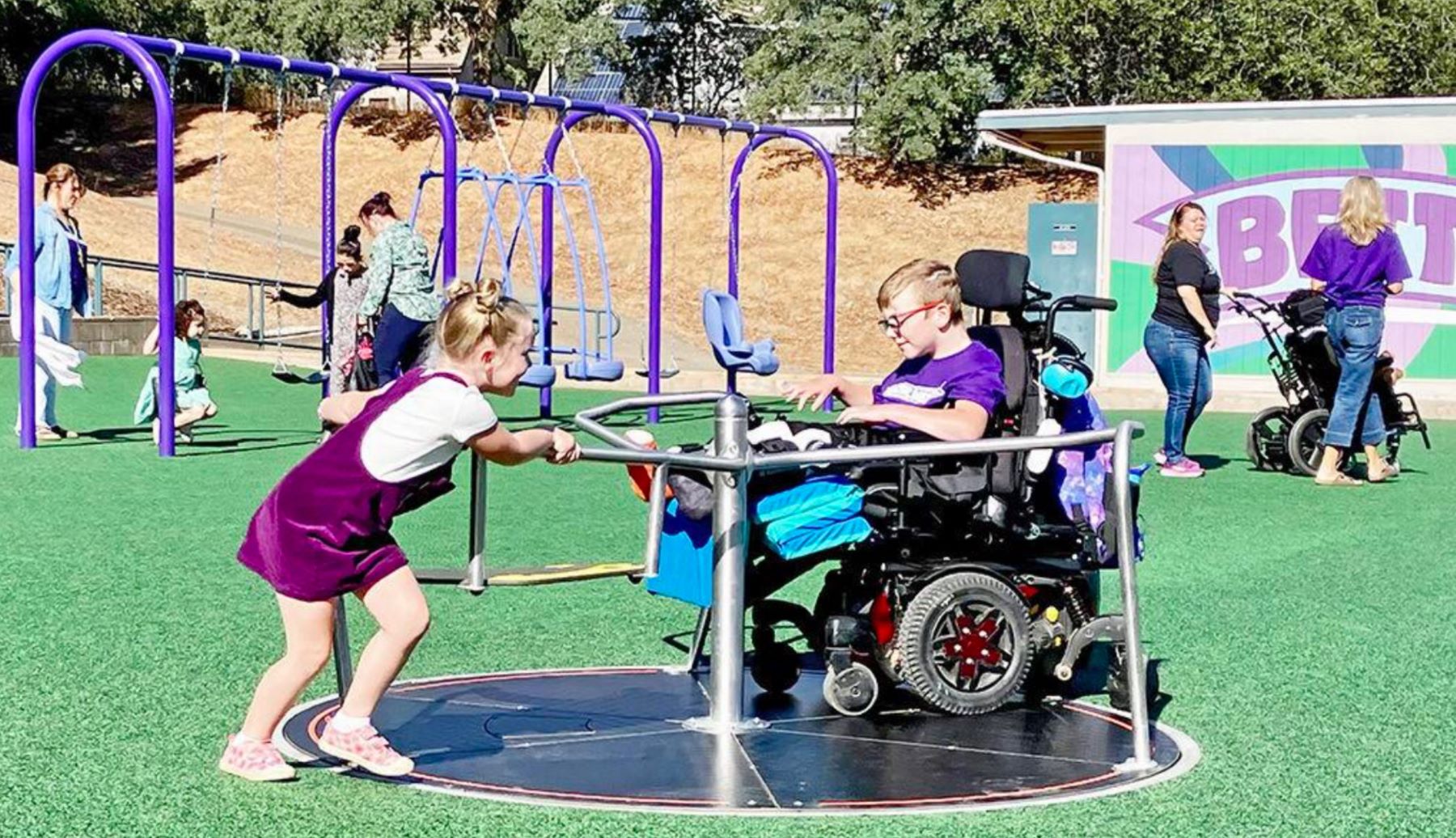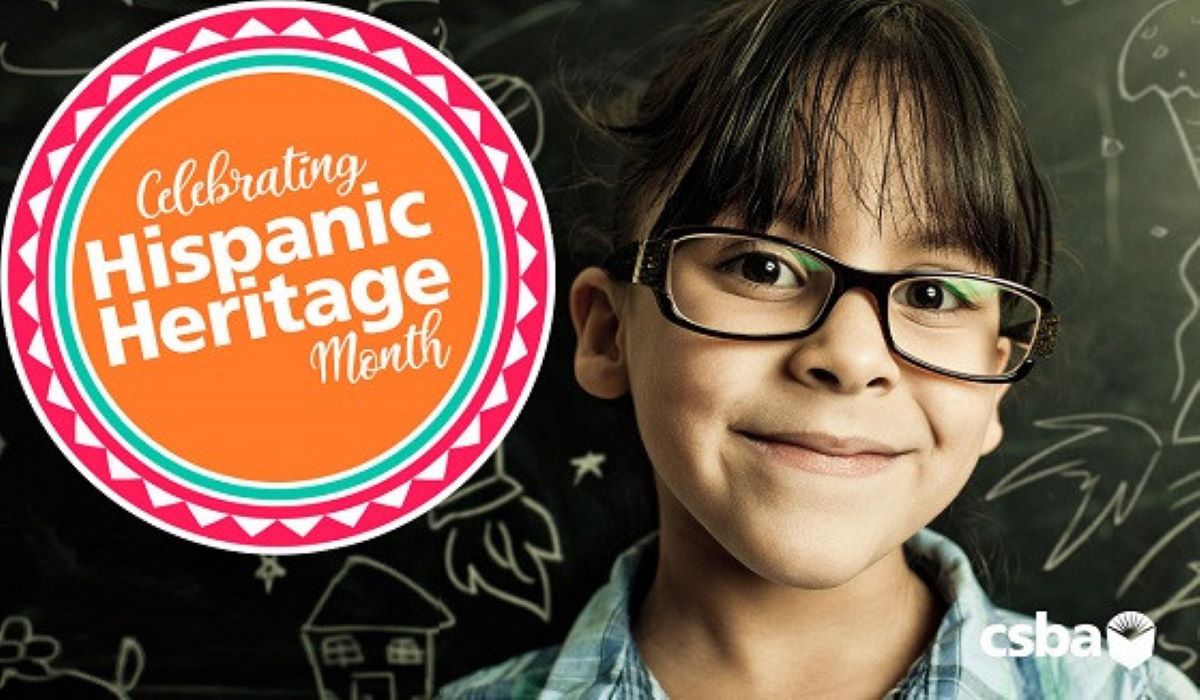On a warm summer day last September, some students in the Rescue Union School District in El Dorado County experienced having fun with their peers on the playground for the very first time. What made the difference? A new all-abilities playground at Jackson Elementary School that allows access for children with wheelchairs and walkers — all on their own.
Jackson Elementary hosts the mobility program in the district, with seven students in wheelchairs. While attempts to make the school as inclusive as possible for these students were in place, one glaring exception stood out to Principal Michelle Williamson.
“For the past few years, our children in wheelchairs have sat on the sidewalk and watched the other children play because it was a bark-based playground,” Williamson told KCRA 3 at the playground’s opening. “Now, they can actually go up on the play structure in their wheelchairs and there are different activities on the structure they can be a part of with all the children together.”
Partnering for support
The project came together at lightning speed for a facilities upgrade. Williamson hatched the idea in October 2022, first garnering the support of Superintendent Jim Shoemake and the Rescue Union SD board. “This was a no-brainer for us, but the barrier was, how do you fund such a large endeavor because our general fund does not allow us just to write a check for $680,000,” Shoemake said. “So, we just started talking about who in the community and where could we start doing some outreach.”
Support quickly grew from local school support groups like the parent-teacher organization, but really began to snowball when the El Dorado County Office of Education (EDCOE) came on board in support of the project. “One thing we do is bridge gaps and provide support for district-level initiatives that benefit the entire county,” said EDCOE Board President Adam Clark. For the all-abilities playground, “we brought together people from all across the county, from different agencies, from government, from non-governmental organizations to help build that.”
“Once EDCOE co-sponsored this idea and really put some significant funding forward and their [Superintendent Ed Manansala’s] name behind it, it was much easier to have a conversation with organizations like the El Dorado Hills Community Services District, the Latrobe Foundation and Walk with Austin, and the ball really started rolling,” said Shoemake.
The playground is now foam-based with access ramps creating a smooth surface with various pieces of play equipment making it accessible to all. There are tandem swings with bucket seats and safety harnesses, a specially designed zip line and places to play that are no longer out of reach, like the play structure. Aides are on the playground to assist students in wheelchairs with getting out of their chairs and onto swings or the zip line.
The nonprofit organization Walk with Austin is named for a child with a disability attending Jackson Elementary. Its mission is to help families find more opportunities for fun that fit the needs of their children with disabilities. “Everyone is having fun on this playground,” Holly Reininger, Walk with Austin’s executive director, told KCRA 3. “It’s not specifically for kids with disabilities, it is to include kid with disabilities.”
Community asset
Additionally, the all-abilities playground is an asset for the community, not just the school. The playground is open to the public during non-school hours. “It’s really fun to go over there on the weekends and see not only our able-bodied children who absolutely love it, because it’s just as fun for children that have challenges with their mobility, and they’re just interacting with the students that are in wheelchairs or with walkers. There are a lot of families that bike ride over or travel over, even from different districts.”
When asked how other districts might be able to replicate this playground, Shoemake said it is all about communicating the “why.” “I think just being able to articulate the why, and then reaching out to folks and trying to build a network of supporters. The groups that we brought together are so varied. They’re not singular in their focus with promoting students with disabilities and access. I think for each group [you approach], it’s just finding the entry point to the conversation that would resonate with them, and then explaining to them, this project addresses the core element of why you exist, so why don’t you partner with us and we’re asking you to fund what you can.”
In the end though, it’s all about how children enjoy the playground. “It was important to create a play space that’s accessible and enjoyable. We wanted to hit a home run with the access, but we also wanted to hit a home run with, ‘Is this a fun place to be?’” said Shoemake. “The other piece is just this social interaction that has occurred and the friendships that are occurring with our students that are there. Our students with disabilities were already highly included in all of our events, but this was just that final place that you can call home as a student and really feel like we’ve done everything that we can to make sure that your TK-5 experience is exceptional.”
July marks Disability Pride Month, an opportunity to honor the history, achievements, experiences and struggles of the disability community. It marks the anniversary of the Americans with Disabilities Act (ADA), landmark legislation that broke down barriers to inclusion in society.






